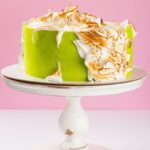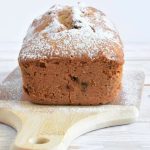Can you use cake icing to decorate cookies? Many bakers have pondered this question at one point or another. The world of decorative confections offers a wide range of options for adding a unique touch to your baked goods, and understanding the differences between cake icing and cookie icing is essential in creating the perfect decorations.
In this article, we will delve into the science behind using cake icing on cookies, discuss the pros and cons of this method, as well as provide tips and tricks for achieving beautiful designs. Additionally, we will explore alternative options for decorating cookies and take a closer look at different types of cookie icing to help you choose the best option for your needs.
Whether you’re a seasoned baker or just starting out, there’s always something new to learn in the world of decorative confections.
When it comes to creating beautifully decorated treats, knowing the difference between cake icing and cookie icing is crucial. While both are used for adding visual appeal, they have distinct characteristics that make them suitable for specific purposes.
This article will not only answer whether you can use cake icing to decorate cookies but also provide insight into the science behind it. Understanding the technical aspects of these two types of icing can help you make informed decisions when it comes to decorating your baked creations.
Using cake icing on cookies may seem like an unconventional choice, but there is certainly some science behind it. We’ll explore how the texture and consistency of cake icing compare to that of cookie icing, as well as how these factors can impact the overall look and taste of your decorated cookies.
By delving into these details, we hope to shed light on whether using cake icing on cookies is a viable option for achieving stunning decorative designs without compromising flavor or texture.
Understanding the Difference Between Cake Icing and Cookie Icing
When it comes to decorative confections, understanding the difference between cake icing and cookie icing is crucial. While both are used to add visual appeal to baked goods, they have distinct characteristics that make them better suited for certain types of desserts.
Ingredients and Consistency
One of the main differences between cake icing and cookie icing lies in their ingredients and consistency. Cake icing, also known as frosting, is typically made with butter or shortening, powdered sugar, and flavorings such as vanilla extract. It has a creamy and spreadable consistency that is perfect for covering the entire surface of a cake.
On the other hand, cookie icing is often made with powdered sugar, milk or water, and corn syrup or another type of liquid sweetener. The consistency of cookie icing tends to be thicker than that of cake icing, allowing it to hold its shape when piped onto cookies.
Functionality
Another key difference between cake icing and cookie icing is their functionality. Cake icing is designed to provide a smooth and even coating on the surface of a cake, making it an ideal choice for creating decorative designs and patterns. In contrast, cookie icing needs to be thick enough to hold its shape when decorating cookies but still thin enough to spread easily over the surface.
Decorating Techniques
When considering whether you can use cake icing to decorate cookies, it’s important to take into account the different techniques required for each type of icing. Cake icing is often applied using a spatula or piping bag for intricate designs, while cookie icing requires a slightly different approach. Cookie decorators typically use flooding techniques with royal icing or thicker lines with piping consistency for more detailed designs.
Understanding the difference between cake icing and cookie icing can help you choose the best option for your specific decorating needs. While some may wonder “can you use cake icing to decorate cookies,” it’s clear that each type of icing serves its own unique purpose in the world of decorative confections.
Can You Use Cake Icing to Decorate Cookies? The Science Behind It
When it comes to decorating cookies, many people wonder if they can use cake icing instead of traditional cookie icing. The truth is, while it is technically possible to use cake icing on cookies, there are some important differences between the two that should be taken into consideration.
Cake icing and cookie icing may look similar, but they are actually quite different in terms of texture and composition. Cake icing is designed to be spreadable and smooth, making it ideal for covering large surfaces like the top and sides of a cake. On the other hand, cookie icing is thicker and more viscous, allowing it to hold its shape when piped onto the surface of a cookie.
The main difference between cake icing and cookie icing lies in their consistency and how they set. Cake icing tends to be softer and more prone to melting at room temperature, which means that it may not hold up well on the surface of a cookie. In contrast, cookie icing sets firm and hardens after application, creating a smooth and glossy finish that is perfect for decorating cookies.
| Characteristic | Cake Icing | Cookie Icing |
|---|---|---|
| Consistency | Spreadable and smooth | Thicker and more viscous |
| Setting Time | Tends to be softer and prone to melting at room temperature | Sets firm and hardens after application |
Pros and Cons of Using Cake Icing on Cookies
When it comes to decorating cookies, there are various options available, but one common question that arises is whether cake icing can be used to decorate cookies. Let’s explore the pros and cons of using cake icing for this purpose.
Pros of Using Cake Icing on Cookies
Cake icing, also known as buttercream frosting, can add a delicious and creamy flavor to your cookies. It also comes in a wide range of colors, making it easy to create vibrant and eye-catching designs on your cookies. Additionally, cake icing can adhere well to the surface of the cookie, providing a smooth and professional finish.
Cons of Using Cake Icing on Cookies
While cake icing can certainly enhance the flavor of your cookies, it may not be the best option for all types of cookies. For example, if you’re decorating sugar cookies or gingerbread cookies that have a harder texture, cake icing may not set as firmly as royal icing or glaze. This could result in a messier appearance or difficulty in transporting decorated cookies without smudging the designs.
Tips for Using Cake Icing on Cookies
If you decide to use cake icing to decorate your cookies, there are a few tips to keep in mind. First, make sure the consistency of the icing is suitable for decorating – it should be soft enough to pipe onto the cookie but firm enough to hold its shape. Additionally, consider using smaller quantities of icing when decorating intricate designs or small cookies to avoid overpowering the flavor.
Tips and Tricks for Using Cake Icing to Decorate Cookies
Decorating cookies with cake icing can be a fun and creative way to add a unique touch to your baked treats. While traditionally used for cakes, cake icing can also be used to decorate cookies, although there are certain tips and tricks to keep in mind for successful results.
When using cake icing on cookies, it is important to consider the consistency of the icing. Cake icing tends to be softer and more fluid than cookie icing, which is designed to harden and set on the surface of the cookie.
To ensure that the cake icing stays in place and doesn’t slide off the cookie, it’s best to use a thicker consistency for decorating. Adding powdered sugar or cornstarch can help thicken the icing and make it more suitable for decorating cookies.
Below are some helpful tips and tricks for using cake icing to decorate cookies:
- Use a piping bag with a small round tip for precision when applying the icing.
- Allow the cookies to cool completely before decorating them with cake icing.
- Consider refrigerating the decorated cookies for a few minutes to help the icing set and firm up.
- Experiment with different colors and designs to create visually appealing decorated cookies.
While using cake icing on cookies can add an interesting flavor twist, there are both pros and cons to consider. Understanding these can help you decide whether this approach is right for your cookie decorating needs.
Alternative Options for Decorating Cookies
When it comes to decorating cookies, there are a variety of options beyond using traditional cake icing. While cake icing can certainly be used to decorate cookies, there are other alternatives that can provide different textures, flavors, and appearances to your baked treats. One popular alternative is royal icing, which is made from powdered sugar and egg whites or meringue powder.
Royal icing dries hard, making it ideal for intricate designs and decorations on cookies. Another option is fondant, a pliable icing that can be rolled out and placed on top of cookies to create a smooth and even surface for decorating with additional details.
Some bakers also opt for using glazes or ganache to decorate their cookies. Glazes provide a glossy finish and can be flavored with extracts or citrus zest for added depth of flavor. Ganache, typically made from chocolate and cream, offers a rich and decadent option for decorating cookies. Additionally, edible markers or food coloring pens can be used to create detailed designs directly on the cookie’s surface. These markers are especially useful for creating precise lines and intricate patterns.
While cake icing can be a convenient option for cookie decorating, exploring alternative options opens up new creative possibilities for your baked goods. Each type of decorative icing has its own unique qualities that cater to different preferences and needs in the world of cookie decoration.
| Decorative Icing Option | Characteristics |
|---|---|
| Royal Icing | Dries hard; ideal for intricate designs |
| Fondant | Pliable; creates smooth surface for additional details |
| Glaze or Ganache | Provides glossy finish; adds depth of flavor |
| Edible Markers/Food Coloring Pens | Create precise lines and intricate patterns directly on the cookie’s surface |
Exploring Different Types of Cookie Icing
When it comes to decorating cookies, there are a variety of icing options to choose from. Each type of icing has its own unique characteristics and is best suited for certain cookie decorating techniques. Here are some different types of cookie icing that you can consider using for your next baking project:
- Royal Icing: This type of icing is made from powdered sugar, egg whites, and flavorings. It dries hard, making it perfect for intricate designs and decorations on cookies.
- Buttercream Icing: Buttercream is a smooth and creamy icing made from butter, powdered sugar, and vanilla extract. It is easily spreadable and can be piped onto cookies to create beautiful designs.
- Glace Icing: Glace icing is made from powdered sugar and water or milk. It dries with a shiny finish, making it ideal for adding a glossy sheen to cookies.
While cake icing may not be the best option for decorating cookies, these types of cookie icings offer a range of benefits that can elevate the appearance of your sweet treats.
It’s important to consider the consistency, drying time, and finish of each type of icing when selecting the best option for decorating your cookies. Experimenting with different types of cookie icings will allow you to discover which one works best for your desired designs and decorating preferences.
Conclusion
In conclusion, while it is possible to use cake icing to decorate cookies, it may not always be the best option. Cake icing is typically softer and more delicate than cookie icing, which means it may not hold up as well on the surface of a cookie. The differences in texture and consistency between the two types of icing can result in a less than ideal decorating experience.
When it comes to decorating cookies, it’s important to consider the pros and cons of using cake icing versus cookie icing. While cake icing can provide a smooth and creamy finish, it may not set as firmly as cookie icing, making it more prone to smudging or getting easily damaged.
On the other hand, cookie icing is specifically formulated to dry firm and hard, which can make it a better choice for intricate designs or when you need your decorated cookies to be transportable.
Ultimately, choosing the best icing for your cookie decorating needs will depend on factors such as the desired outcome, type of cookie being decorated, and personal preference. It’s important to experiment with different types of icing to see what works best for you. And don’t forget to have fun with your decorating process – whether you choose cake icing or cookie icing, the most important thing is to enjoy the creative experience.
Frequently Asked Questions
Does Cake Frosting Work on Cookies?
Cake frosting can work on cookies, but it may not provide the best texture or appearance. Cookie icing or royal icing tends to work better for decorating cookies due to its smooth and glossy finish.
What Is the Difference Between Icing and Cookie Icing?
The main difference between icing and cookie icing is their consistency and purpose. Icing, typically used for cakes, is thicker and creamier, while cookie icing is thinner and glossier, making it more suitable for decorating cookies.
What Type of Frosting Is Best for Cookie Decorating?
The best type of frosting for cookie decorating is royal icing. This type of frosting hardens when it dries, making it ideal for creating intricate designs on cookies without smudging or running. It also provides a smooth and professional-looking finish to decorated cookies.

Welcome to my blog about home and family. This blog is a place where I will share my thoughts, ideas, and experiences related to these important topics. I am a stay-at-home mom with two young children. I hope you enjoy reading it! and may find some helpful tips and ideas that will make your home and family life even better!





